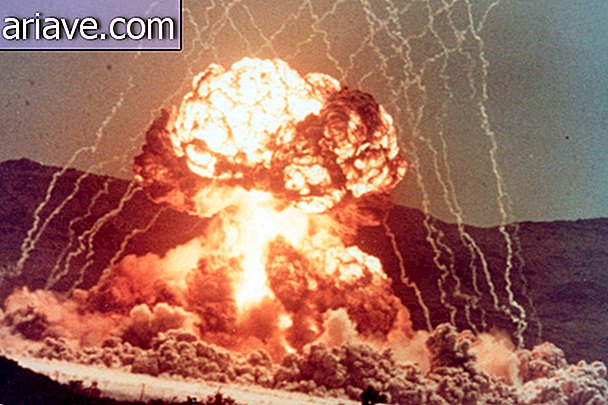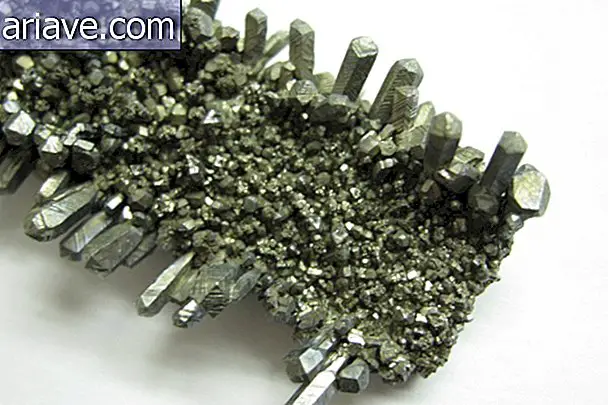North Korean bombs would kill 2 million people in Tokyo and Seoul
A 38North study shows what would likely happen if North Korea decided to attack the capitals of the main US allies: Japan and South Korea. Near Pyongyang, the capitals would record the deaths of 2.1 million citizens, with nearly 8 million injured.
"On several occasions in recent weeks, US President Donald Trump and other members of his administration have threatened to use military force to prevent North Korea from carrying out new nuclear or ballistic missile trials, " 38North comments. "If the US executes any military option, the risk of military escalation from the North will increase, including the use of nuclear weapons against South Korea and Japan. According to the calculations presented below, if the 'unthinkable' happens, Nuclear detonations over Seoul and Tokyo, with North Korea's current estimates of weapons production, could result in 2.1 million deaths and 7.7 million injuries. "
Nuclear detonations over Seoul and Tokyo could result in 2.1 million deaths and 7.7 million injuries
Accounting since 2011, according to the survey, Kim Jong-un (leader of North Korea) has already performed 98 ballistic missile tests. In addition, nuclear weapons (thermonuclear and a miniaturized hydrogen bomb) and intercontinental missile tests were performed.
Today, Korea is believed to have between 20 and 25 nuclear bombs that power between 15 and 25 kilotons - but a test conducted on September 3 indicated that the country already has a thermonuclear bomb between 108 and 250 kilotons.
With the current high tension between the United States and North Korea, "it is possible that another Pyongyang nuclear test will impact an area very close to US bases in Guam, for example, and Washington may react strongly. That could include options since the missile attack to the attack on North Korean test sites, "the research noted. "North Korea's leadership may see this as an effort to remove Kim Jong-un from power and as a result they would use nuclear weapons in retaliation."
The hydrogen bomb can be up to 50 times more powerful than an atomic bomb
Japan is the only country that has suffered from major nuclear bomb explosions. On August 6, 1945, the United States attacked Hiroshima and killed 80, 000 citizens. A few days later (09), the US bombed Nagasaki, with over 40, 000 citizens killed. The Americans also killed about 100, 000 civilians before detonating the nuclear bombs.
It turns out that in 1945 the population density in Japan was much lower. If bombs fired by the US were between 15 and 25 kilotons, the damage caused by a North Korean bomb with power between 108 and 205 kilotons would be devastating.

Hydrogen bomb
The Democratic People's Republic of Korea had already carried out nuclear weapons tests in 2006, 2009 and 2013. However, all were atomic bomb tests, unlike in March last year, which reaches another level in terms of destruction. The hydrogen bomb can be up to 50 times more powerful than an atomic bomb. Yes, a bomb 50 times stronger than, for example, the one the US threw at Hiroshima, Japan.
What is this "weapon"? Firstly, "hydrogen" (H) is a designation that best fits the thermonuclear meaning. One of the things that differentiates the H bomb from the atomic bomb is the energy release mode. Activating hydrogen requires a process in which fusion and nuclear fission occur - in the case of atomic, only the latter is required.
The detonation of a hydrogen bomb uses a nuclear bomb as a trigger
Activating an H pump also starts from the following process (known as Teller-Ulam): Each fusion pump has a small fission pump that explodes and heats the fusion fuel (technically the tritium and deuterium isotopes). Fused together, they form helium and release huge amounts of energy - the power is so great that it is similar to solar energy. After all this, the released energy can still be used to generate a third fission process and allow engineers and scientists to make a more powerful bomb.
But, what is fission process? It is the division of a large atom (uranium-235 or plutonium 239) into two or more smaller nuclei. And the fusion process? It is the opposite: the conversion of two or more atoms (such as deuterium and tritium) into a larger one.
In short: the detonation of a hydrogen bomb uses a nuclear bomb as a trigger. Then the fission heat creates the energy needed for a fusion. In this way, the formed neutrons collide with the trigger bomb uranium and thus a chain reaction is formed.
- Below is an infographic that our TecMundo partners have prepared on how a hydrogen bomb works.












